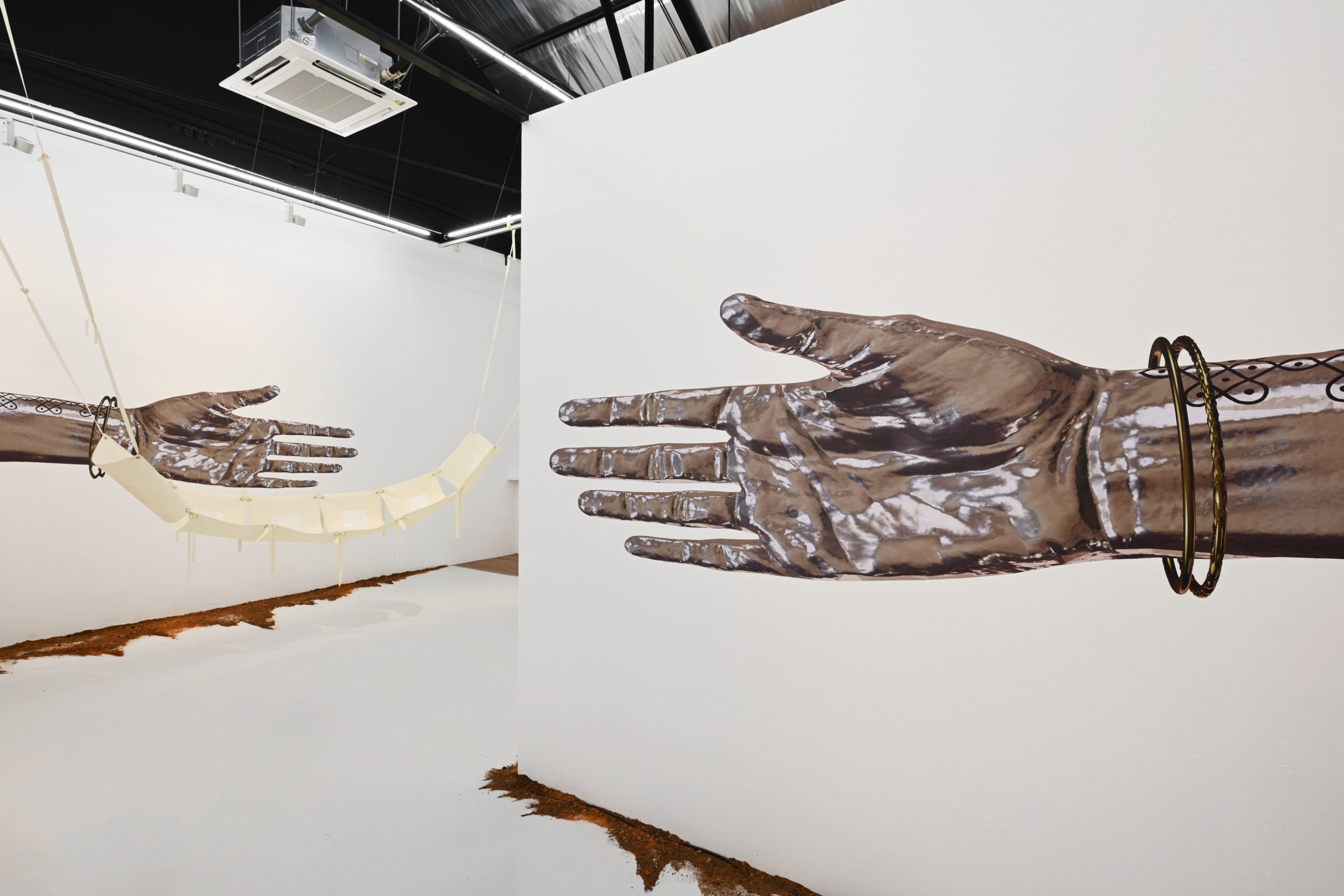-

TURBINE TROPICS, 2023
Read The Full Press Release HereYeo Workshop is pleased to showcase a solo presentation of a new video work by Singaporean artist Priyageetha Dia for the second edition of Frieze Seoul. Dia’s practice is concerned with speculative methods of counter-narratives that correspond to Southeast Asian postcolonial histories and the transnational migration of ethnic communities. Through poetic interventions using time-based and print mediums, specifically 3D animation and game engine software, Dia translates historical flashpoints into sensorial environments.
This new body of work continues her current research around Southeast Asian plantation histories, in particular rubber plantations And makes significant parallels between Data extractivism and the colonial plantation system, though distinct phenomena arising from different eras and contexts, share, particularly in the Southeast Asian context.
-

-

-

LIQUID.VISION_NIL.LAND (AFTER MALAYARUBBERPLANTATION, GETTY), 2022
Read MoreThe series of companion prints liquid.vision_nil.land (after MalayaRubberPlantation, Getty) proposes another mode of attentive looking. Appropriating a single stock image of Malayan rubber plantations, Dia disrupts colonial conventions of representation. The distant and omniscient gaze of the plantation worker is fractured into intimate cropped portraits of individual labourers. While acts of appropriation might not restore the colonial subjects’ rights to self-image, they intervene in a system of representation that has remained comfortably untouched and unquestioned in its commodified form. Dia’s gesture highlights that the relationship with colonial photography for colonised subjects and their heirs is not straightforward. As violent as they are, these images are often rare material traces accounting for the existence of people and communities otherwise deprived of representation.
Exhibition View: Kochi-Muziris Biennale 2022-2023: In Our Veins Flow Ink and Fire, Aspinwall House, Fort Kochi, Kerala, India (12 December, 2022 – 10 April, 2023). Image credit Kochi-Muziris Biennale 2022-2023.
-

_KOLAM.BANGLE.HAND, 2022
The sense of haptic in the artist’s animation is amplified by her relinquishment of a linear perspective and resistance to depth vision to which Western’s modern traditions of representation are tied. Besides, the interactions between her protagonist and the environment enhance the haptic sensibility in the artist’s work. Transferring the ritual drawing of kolam, which traditionally marks the thresholds of homes or the margins of the streets onto the body, Dia continuously strives to dissolve the boundaries between body and environment. This spatial merging is amplified in the architecture of the exhibition where enlarged hands on the wall guide, embrace, or entrap the viewers inside.
Read the full text, Forget Me, Forget Me Not by Anca Rujoiu. -
Group Exhibition: An Exercise of Meaning in a Glitch Season, Part of Proposals of Novel Ways of Being
Priyageetha Dia, LONG LIVE THE NEW FLES$S$SH, 2020, single channel video 16:9 format, colour and sound (stereo), 4 min 30 sec, edition of 3 plus 1 artist's proof. -
 Priyageetha Dia, LONG LIVE THE NEW FLES$S$SH, 2020. Image courtesy National Gallery Singapore
Priyageetha Dia, LONG LIVE THE NEW FLES$S$SH, 2020. Image courtesy National Gallery Singapore
Frieze Seoul | Priyageetha Dia
Past viewing_room






